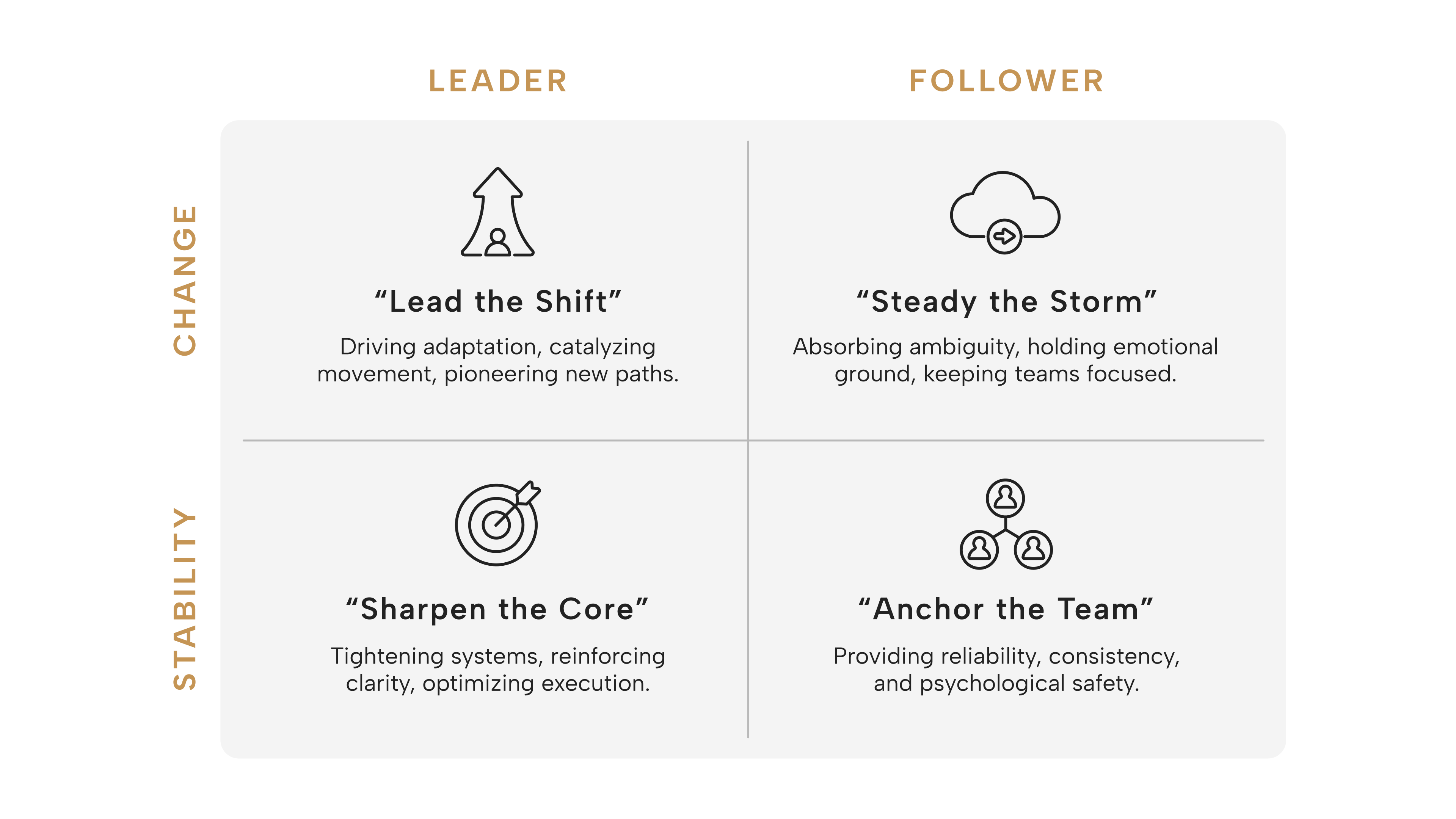This article is based on a leadership conversation featuring Erin Sutton, Partner at McChrystal Group, Cricket Oles, Senior Advisor at McChrystal Group, Anna Roberts, Business Chief of Staff, and Kevin Guthrie, Executive Director for the Florida Division of Emergency Management, as part of McChrystal Group’s Team of Teams® 10-Year Anniversary Series.
For years, middle management has been characterized as inefficient, bloated, or expendable. Headlines refer to a “frozen middle,” and many organizations have responded by cutting or thinning this layer in the name of agility or cost savings. Yet, the data and on-the-ground experience tell a different story: when middle managers are empowered and supported by the right systems, they become a force multiplier for strategy execution, transformation, and retention.
As Kevin Guthrie put it, “You live and die by the mid-level manager. I can only push a rock up the hill so much. I’ve got to have that mid-level leadership behind me helping me push that rock.”
This perspective is not theoretical. In the Florida Division of Emergency Management, investment in middle managers led to a tripling of the leaders who could drive enterprise change—from the “same 10 people” to the “same 30 people.” The result was faster innovation adoption, higher retention, and stronger operational resilience.
“Our average tenure used to be eighteen months. Now I can’t think of a single mid-level manager we’ve lost in six months,” Guthrie added. “If you invest in them, they stay.”
The strategic takeaway is clear: Middle management is not a cost center. It is an underutilized performance lever.
Why the Middle Matters More Than Ever
Today’s operational environment is defined by complexity, pace, and interdependence. No executive, no matter how visionary, can lead transformation from the top alone.
McChrystal Group research found that frontline employees were three times more likely to receive strategy information from their supervisor than an executive.
Middle managers translate strategic vision into frontline action, and they absorb ambiguity to protect teams and maintain focus. They can help build resilience by identifying early and solve problems across silos, and they are vital culture carriers who drive retention and employee engagement.
But these outcomes are only possible in systems that enable proactive followers, not restrict, their impact.
“Team of Teams is not about flattening the hierarchy,” explained Cricket Oles. “It keeps the hierarchy in place, and adds systems and mindsets that let people operate more like a network inside that structure.”
This is a crucial distinction. The goal is not to bypass middle managers. It is to architect systems where the middle layer can operate as connectors, integrators, and accelerators.
The Operating Reality: Middle Management Is Defined by Tension
Leadership at the middle of an organization is uniquely complex.
“Middle management is where leadership is most contextual,” described Oles. “You’re constantly shifting: sometimes you’re the leader, sometimes you’re the follower.”
Two persistent tensions define this role:
- Leading vs. Following
- Driving Change vs. Maintaining Stability
When these tensions are mapped as a visual, they reveal four critical modes of leadership middle managers must fluidly shift among:

- Lead the Shift – Driving new processes or change initiatives
- Steady the Storm – Absorbing disruption and guiding teams through top-down change
- Sharpen the Core – Optimizing systems and reinforcing execution discipline
- Anchor the Team – Providing psychological safety, predictability, and trust
These quadrants offer an understanding of the capabilities individuals and the enterprise need to drive performance and execution. Executives can use this model to identify where their organization is over- or under-weighted, and where capability must be built ahead of the next transformation.
From Capability to ROI: Systems That Unlock Proactive Middle Managers
Too many organizations try to “train their way” to stronger middle management without adjusting the underlying systems. But as Oles emphasized, development is only half of the solution. The other half is system design.
“You can’t just develop individuals,” said Oles. “You have to create systems that enable the right leadership behaviors. If your communication and decision-making systems are passive or top-down, you won’t get proactive mid-level leaders.”
The organizations that realize ROI from their middle layer do three things differently:
- They redesign communication from broadcast to shared consciousness: Rather than scripted executive town halls, they create forums where information flows across levels and silos in real time.
- They clarify decision authority: Managers know when they are expected to lead versus execute, eliminating friction and hesitation.
- They activate peer networks, not just vertical chains: The real value and speed come when mid-level leaders are well-connected across the enterprise.
“People are now going to each other, (and) we’ve broken down the programmatic silos,” note Guthrie. “They’re helping each other solve time management, retention, training: all the shared problems of leadership.”
The Modern Role: Coach and Player
As work accelerates and AI reshapes operational tasks, the middle manager is evolving into a coach-player role: still accountable for outcomes, but increasingly responsible for building capability in others.
“Middle managers have to be both the coach and the player — that’s the connective tissue of an organization,” said Sutton.
Guthrie demonstrated the strategic importance of this dual mindset in action.
“There are certain activities only the coach can do,” he said. “But my instinct should always be to train two, three, four people to be able to do that, so I can extract myself from the weeds and move into higher-level strategic leadership.”
What Executives Must Do Now
If you sit in the C-suite, your middle managers are either your greatest bottleneck or your greatest accelerant. The difference lies in how you design their environment.
Immediate actions to drive enterprise performance:
- Map your middle using the 2×2 framework to identify capability gaps before the next change.
- Expand your “same 10 people” to the “same 30” through targeted development.
- Establish a shared consciousness rhythm: weekly cross-functional forums where information and insight flow freely.
- Codify decision phases: when managers should shape vs. execute.
- Invest and measure results. Retention, time-to-execution, innovation, and employee engagement all rise when the middle is enabled.
The ROI is tangible. As Guthrie demonstrated, retention increased dramatically, while execution capacity expanded without an increase in headcount.
The Strategic Imperative
If senior leaders are the architects of vision, middle managers are the force that makes it real. They are not simply managers of tasks, they are translators of strategy, carriers of culture, and stabilizers of teams through volatility.
And as we move deeper into an era defined by AI, rapid change, and enterprise interdependence, one thing is clear: Investing in middle managers is not optional, it is the difference between organizations that adapt and organizations that fall behind.


